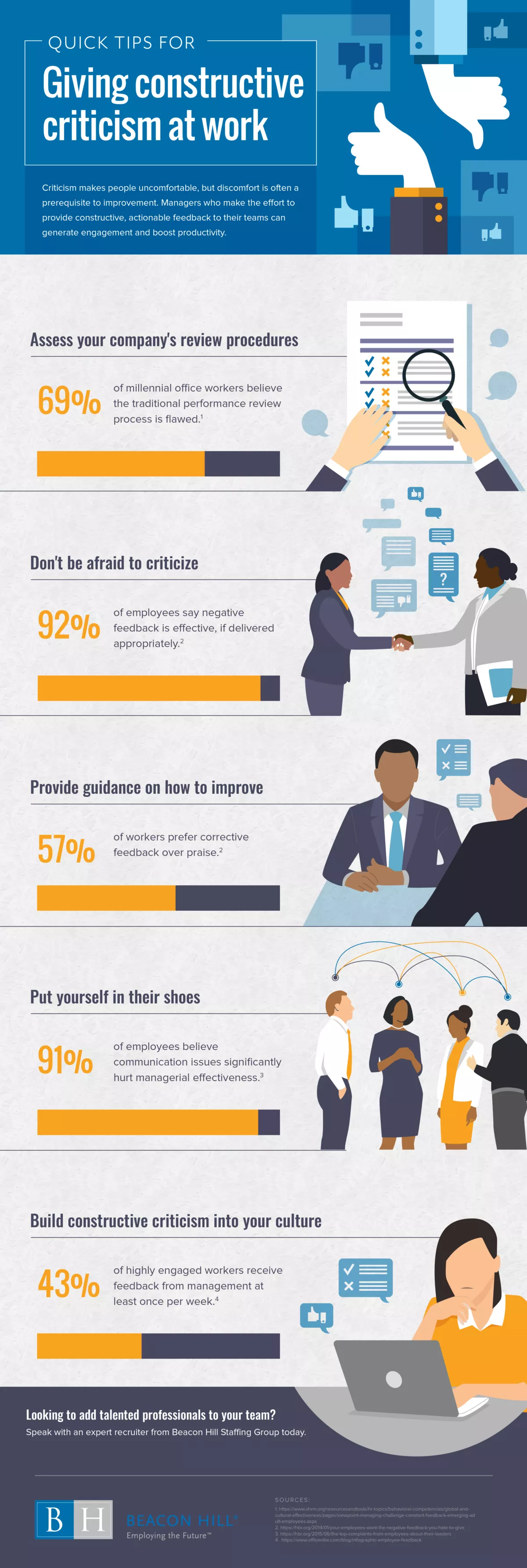Quick tips for giving constructive criticism at work
Constructive criticism is an import managerial tool because it helps employees understand their strengths and weaknesses.
Effective criticism does not judge others for poor performance, but rather identifies areas of improvement. No one is perfect; we can all improve in some way, but it's difficult to determine what to put effort into without a different perspective.
Your employees aren't afraid of criticism
Oftentimes, managers hesitate to criticize their employees' performance because they're afraid negative feedback will cause more problems. This is only true when the criticism is delivered poorly.
In fact, the Harvard Business Review reported that the overwhelming majority of workers find negative feedback to be helpful. In some cases, employees already worry their work isn't up to par, but they may struggle to identify how to solve the issue.
When managers support their feedback with advice on how to improve, employees gain a new path forward and everyone benefits. Workplace cultures that encourage feedback of all kinds will benefit from the open lines of communication. Problems can occur when criticism is hurtful, however. Simply pointing out errors and mistakes won't help anyone improve.
At the end of the day, everyone on your team is working toward the same ambitions. Therefore, your criticism should reflect those goals and support the professional growth of the people who can help you achieve your business objectives.
Check out our infographic below to learn more:

 Back to Top
Back to Top

